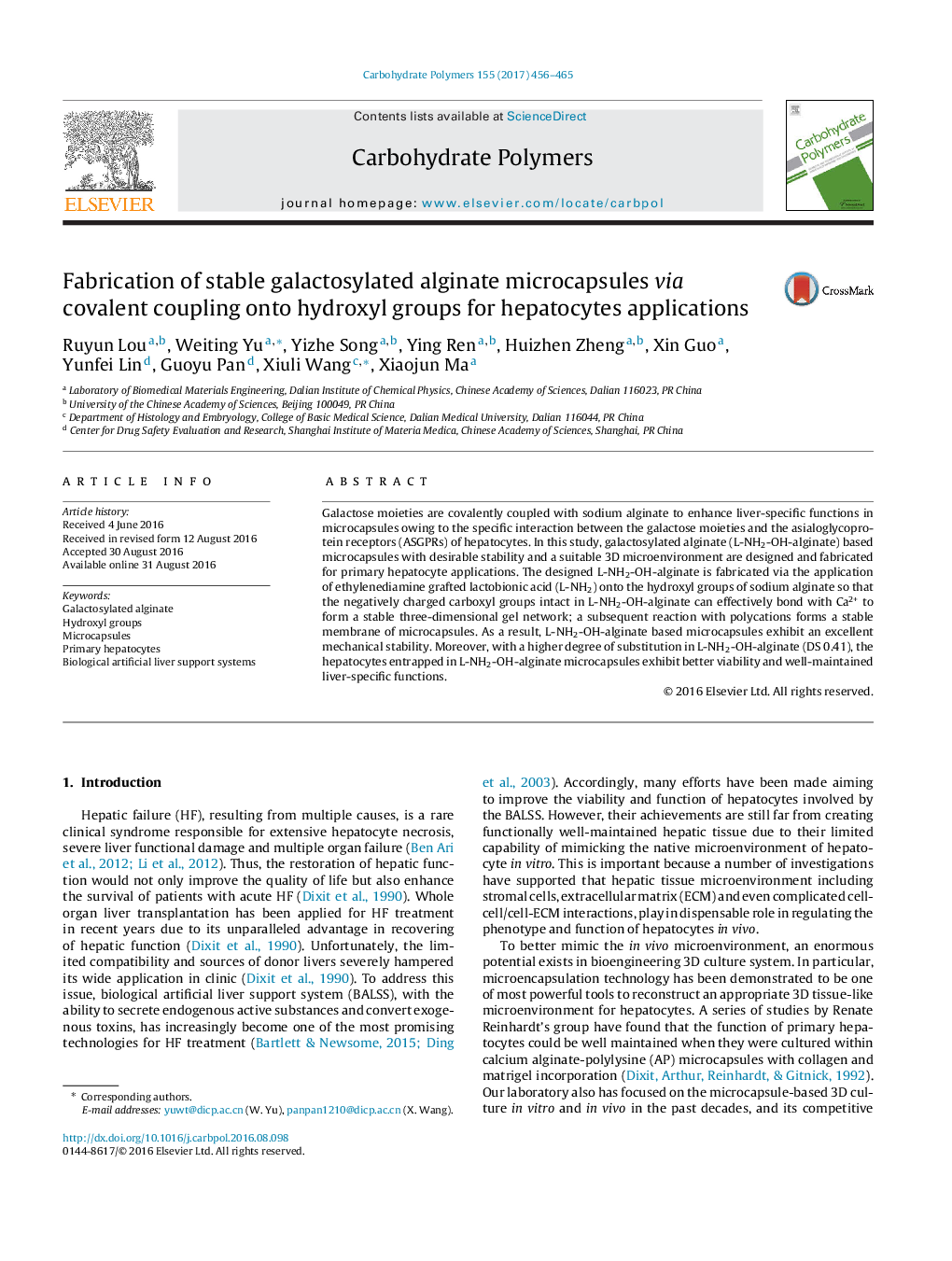| Article ID | Journal | Published Year | Pages | File Type |
|---|---|---|---|---|
| 7784981 | Carbohydrate Polymers | 2017 | 10 Pages |
Abstract
Galactose moieties are covalently coupled with sodium alginate to enhance liver-specific functions in microcapsules owing to the specific interaction between the galactose moieties and the asialoglycoprotein receptors (ASGPRs) of hepatocytes. In this study, galactosylated alginate (L-NH2-OH-alginate) based microcapsules with desirable stability and a suitable 3D microenvironment are designed and fabricated for primary hepatocyte applications. The designed L-NH2-OH-alginate is fabricated via the application of ethylenediamine grafted lactobionic acid (L-NH2) onto the hydroxyl groups of sodium alginate so that the negatively charged carboxyl groups intact in L-NH2-OH-alginate can effectively bond with Ca2+ to form a stable three-dimensional gel network; a subsequent reaction with polycations forms a stable membrane of microcapsules. As a result, L-NH2-OH-alginate based microcapsules exhibit an excellent mechanical stability. Moreover, with a higher degree of substitution in L-NH2-OH-alginate (DS 0.41), the hepatocytes entrapped in L-NH2-OH-alginate microcapsules exhibit better viability and well-maintained liver-specific functions.
Related Topics
Physical Sciences and Engineering
Chemistry
Organic Chemistry
Authors
Ruyun Lou, Weiting Yu, Yizhe Song, Ying Ren, Huizhen Zheng, Xin Guo, Yunfei Lin, Guoyu Pan, Xiuli Wang, Xiaojun Ma,
